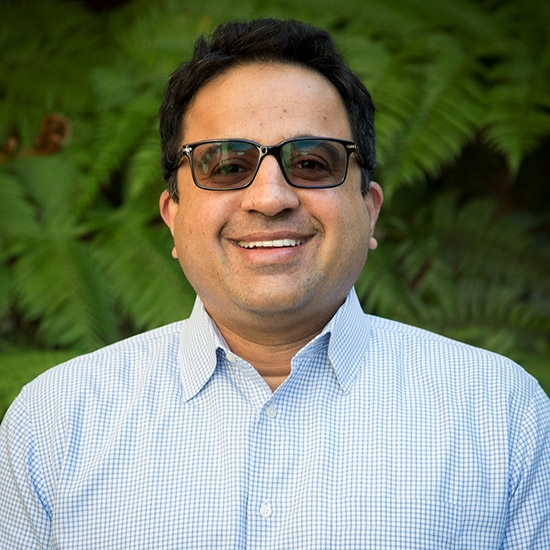Ram Seshadri, professor in the Materials Department at the UCSB College of Engineering, has been named the inaugural Fred and Linda R. Wudl Chair in Materials Science. The chair supports a CoE Materials faculty member whose interdisciplinary scholarship merits a joint appointment in the life sciences or physical sciences. Seshadri also has an appointment in the Department of Chemistry and Biochemistry.
“Congratulations to Ram on being named the first Fred and Linda R. Wudl Chair in Materials Science, and thanks to Fred and Linda for their generosity in establishing this chaired professorship,” said Tresa Pollock, Materials Department chair. “We are fortunate to have such fantastic colleagues all around the Materials Department.”
"It is my pleasure to congratulate Ram Seshadri as the first Fred and Linda R. Wudl Chair in Materials Science, and to offer my sincerest appreciation to the Wudls for their vision and generosity,” said Rod Alferness, dean of the UCSB College of Engineering. “This honor acknowledges not only Ram’s brilliance as a scientist and an engineer, but also his ability to reach across disciplines in pursuing important new knowledge.”
Seshadri joined the UCSB faculty in 2002 and currently directs the National Science Foundation Materials Research Science and Engineering Center at UCSB. He earned his BSc in chemistry from St. Stephens College at Delhi University and his PhD in solid-state chemistry from the Indian Institute of Science in Bangalore, India
Following postdoctoral stays at the CRISMAT lab in Caen, France, and at the University of Mainz, in Germany, he spent three years as a faculty member at the Indian Institute of Science before moving to Santa Barbara. Seshadri’s research combines aspects of physics, chemistry, and materials science, within the broad theme of crystal chemistry and the relationships between structure, and the electrical, magnetic, thermal, optical, and redox properties of functional inorganic materials.
Seshadri is also deeply interested in developing advanced tools for characterizing the structure of materials, and in using first-principles electronic-structure calculations to understand and predict function. Seshadri was elected to the Fellowship of the Royal Society of Chemistry in 2010 and the American Physical Society in 2015. He currently serves as associate editor of the ACS journal Chemistry of Materials and sits on the editorial committee of Annual Reviews of Materials Research.
Seshadri expressed his appreciation for being named to the new chair by saying, “A few years after I started my graduate research, I published, along with my thesis advisor and some collaborators, a paper in Solid State Communications that was perhaps the third or fourth study on an organic ferromagnet that Fred Wudl had developed in 1991. The opening line of the article abstract reads: ‘C60·TDAE (TDAE = tetrakis (dimethylamino) ethylene), with a Tc of ~16 K, is probably the best example of an organic molecular ferromagnet known to date.’ That statement, which may still be true, simultaneously captures Fred Wudl’s pioneering role in developing functional organic materials, the scientific challenges that such materials continue to pose, and the many years that I have known of, and been inspired by, Fred’s research.
“Since I first met Fred and Linda in 2000, I have come to know them personally and have also learned about Linda’s distinguished career at Amgen. To be named the Fred and Linda R. Wudl Chair in Material Science is a great honor that is also personally very meaningful to me.”
Linda Wudl (née Raimondo) was born and raised in Southern California and graduated from UCLA with a BS in microbiology in 1967. She received her MS from Harvard in 1969 and her PhD in genetics from SUNY Buffalo in 1972. She subsequently joined Amgen, where she rose to become Vice President of Quality. She retired in 2007.
Fred Wudl was born in Cochabamba, Bolivia, and emigrated to the United States in 1958. He received BS and PhD degrees from UCLA in 1964 and 1967, respectively, then did his postdoctoral research at Harvard before joining the faculty at SUNY Buffalo. He moved to AT&T Bell Laboratories in 1972 and joined the UCSB faculty in 1982. He moved to UCLA as the Cortaulds Professor of Chemistry In 1997, and returned to UCSB in 2006. He is widely known for his research on organic conductors and superconductors, and his interest in electronically conducting polymers resulted in the discovery of the first transparent organic conductor and the first self-doped polymers. He is a member of the American Academy of Arts and Sciences and a Fellow of the American Association for the Advancement of Sciences.

Ram Seshadri
